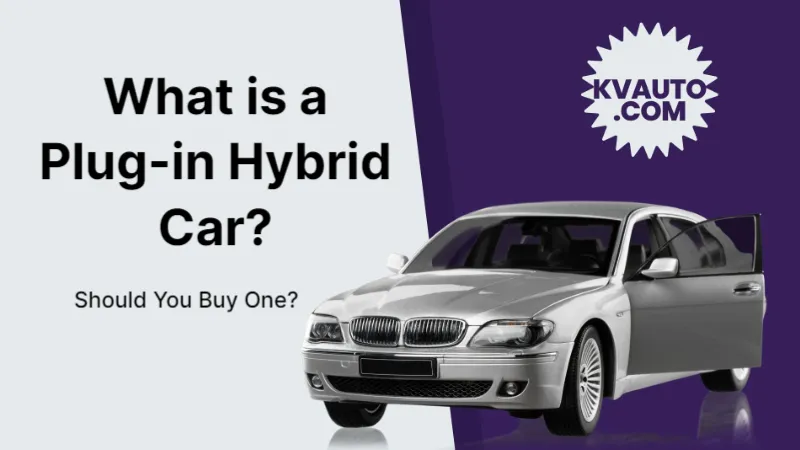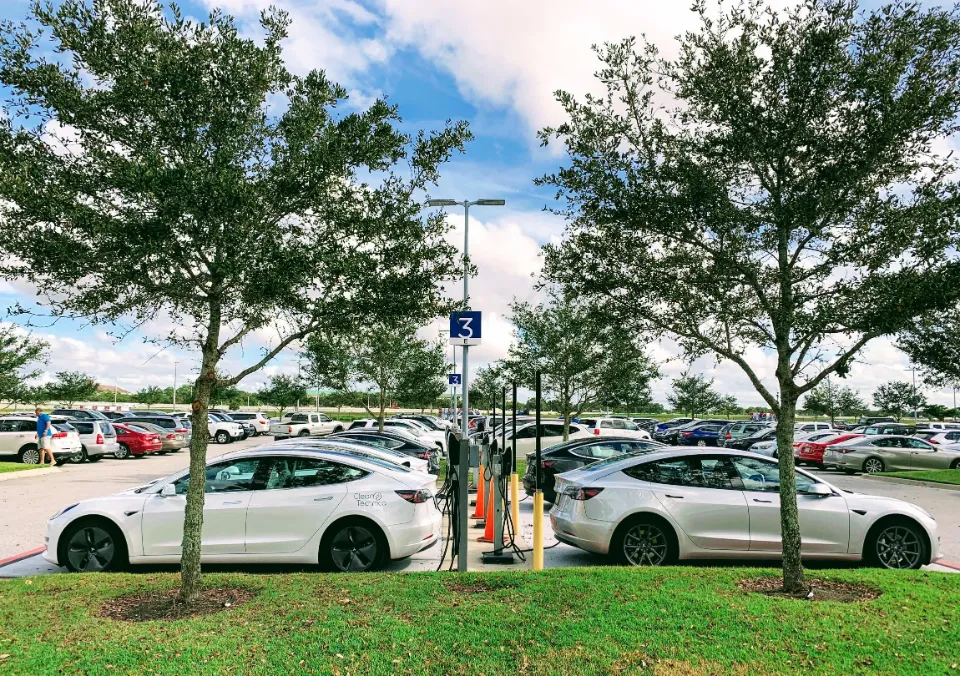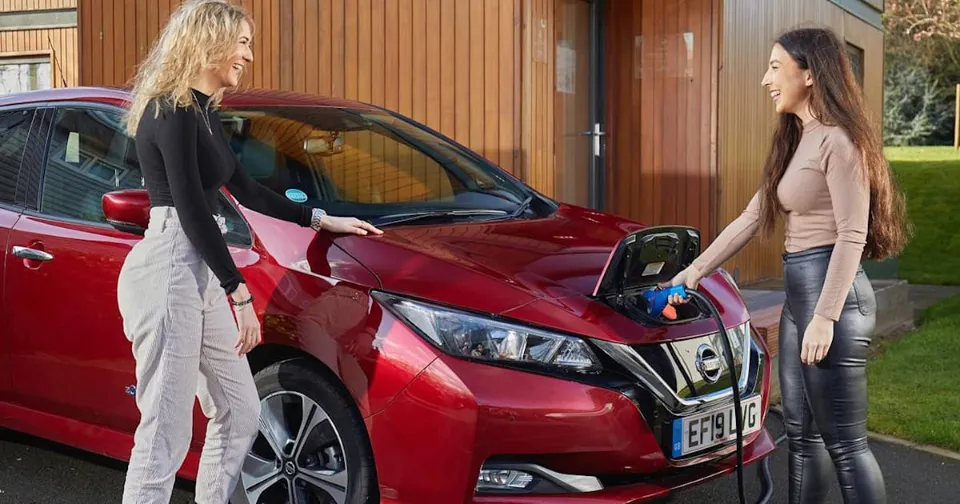Unlike electric cars, which only use electricity, plug-in hybrid vehicles have a gasoline engine as well. Unlike conventional hybrids, they have plug-in battery chargers. I am going to tell you what is a plug-in hybrid car.
Plug-in hybrid vehicles (Because they offer many of the fuel and emissions advantages of electric cars on short drives while having the flexibility of a petrol or diesel engine for longer runs, plug-in hybrid electric vehicles (PHEVs) can be a good option for anyone who is not ready to go fully electric.
How Do I Charge a Plug-in Hybrid Car?
You can charge a PHEV with a conventional, household three-pin plug, a wall charger or a public charging point. The slowest option is a 3kW household plug; depending on the size of your car’s battery pack, a full charge will probably take five or six hours. A charge will be finished in about three hours using a 7.4kW wall charger, the kind that is frequently installed in homes or workplace parking lots.
If your PHEV is capable of charging at a higher rate, you might be able to get your energy fix more quickly at a rapid public charging station. Over 35,000 public charging stations can be found at 13,000 different locations across the UK, and an increasing number of them now provide very high charging rates.
Ecotricity’s ageing motorway service station charging network is being replaced by Gridserve, and this company’s 350kW ultra-rapid chargers can provide a 10% to 80% charge for a compatible electric car in just 20 minutes. Anyone who needs a quick top-up will appreciate this, but the price is about five times higher than charging at home.
Question: What are Hybrids Vs. Plug-in Hybrids, and how do the two types of vehicle compare?
Advantages of Plug-in Hybrid Cars
Any PHEV will have better fuel economy (and lower CO2 emissions) than a typical combustion-engined car, which is its main benefit. The advantages will be most noticeable if you can drive your car entirely or mostly on electricity for shorter distances, provided that you remember to recharge the batteries after each trip. Driving a petrol-powered car typically costs 12 pence per mile; however, if you charge it at home for 14 pence per kilowatt hour, it only costs 5 pence per mile to travel on electricity.
Both conventional hybrids and PHEVs have the benefit of eliminating “range anxiety,” which is a problem with electric cars. This is because they both have combustion engines, so you won’t unexpectedly run out of range.
When considering a gasoline/electric vehicle, take a quick look at the benefits of hybrid cars to see how many of these features you may not have previously thought about. The benefits of hybrid cars include Reducing Fuel Costs, Fewer Emissions, Instant Torque, No Idling, Tax Incentives…

Disadvantages of Plug-in Hybrid Cars
To get the most out of a plug-in hybrid vehicle, it must be regularly charged. Otherwise, they have worse fuel efficiency than a regular car due to the added weight of the batteries. You’re just dragging around dead weight if the battery isn’t charged.
(A hybrid car runs on both gas and electricity. The face of environmentally friendly driving options has been drastically altered by this technology. Read on to find out more about Hybrid Car Batteries.)
Another issue is price. The Hyundai Ioniq Plug In Hybrid costs about £6,500 more than the Ioniq Hybrid, but only £100 less than the Ioniq Electric. A plug-in hybrid version will always cost more than an equivalent petrol or diesel model because batteries, software, and electric motors are expensive. Although the cost pushes it closer to the EV, a plug-in hybrid may be a good middle ground between conventional and all-electric vehicles.
While the instant torque is impressive, the additional weight does affect the ride and handling of the car. This has already been mentioned. A firmer ride and less precise cornering are two drawbacks, although these issues also affect pure electric vehicles.
Editor’s Tip: Here’s the answer to “How Do Plug-In Hybrid Electric Cars Work?” In plug-in hybrid electric vehicles (PHEVs), an internal combustion engine (ICE) is powered by another fuel, such as gasoline, while an electric motor is powered by batteries. The ICE, a wall outlet, a charging device, or regenerative braking can all be used to charge PHEV batteries. Usually, the car runs on electricity until the battery is almost completely gone, at which point it switches over to using ICE.
Do PHEVs Make Good Company Cars?
Because the benefit in kind (BiK) tax rates for plug-in hybrids are so much lower than those for petrol and diesel alternatives, they are among the most affordable models to operate as company cars.
The company car tax rate for a car with up to 50g/km CO2 emissions and a pure electric range of 40 to 69 miles is just 8% and for cars with a shorter range (30-39 miles) it’s 12%. (Are hybrid cars good for long distance driving? How far a typical hybrid can travel will be covered in this blog.) In contrast, the rate for gasoline vehicles with 95 to 99 g/km of CO2 is 24%, and most diesel vehicles must also pay an additional 4% surcharge.
Suggested reading: Thankfully, the market for used hybrids is rich enough for us to pick and choose those with the highest safety and reliability ratings, plus low overall cost of ownership. The best used hybrid cars are those listed here.
How to Charge a Plug-in Hybrid Car?
The process of charging a plug-in hybrid car is very similar to that of an electric car. In an EV, you won’t get close to the declared range, but you will gain from quicker charging times.
The majority of plug-in hybrid cars are supplied with a charging cable, so make sure this is present when you’re buying a used car. It costs between £100 and £200 to buy a new replacement, though they are available. Depending on the vehicle, you can find the charging port on the side or front of the car.
While it can be plugged into a three-pin domestic plug socket, purchasing a home charge point is advised. You gain from the car’s smart technology and it is quicker and safer to recharge this way. Another advantage of using a home charge point is the ability to benefit from cheaper off-peak energy rates.
The cost and speed of charging a plug-in hybrid car depends on the size of the battery and the type of charger.
Editor’s Advice: How Much Does a Hybrid Battery Cost? Compared to conventional gasoline-only vehicles, hybrids use different batteries, and their prices range from $1,000 to $8,000. The final cost you’ll incur is determined by the make and model of your car as well as whether you choose a new or refurbished battery.
A driver who fully charges an electric car at home with a 64kWh battery (from 0% to 100%) will pay £18.37 under Ofgem’s energy price cap, which is in effect until 30 September 2022. The new cap, which was announced on August 26th, will take effect on October 1st, 2022, raising this cost to pounds 33.80. However, keep in mind that most plug-in hybrids have smaller batteries and will cost less to recharge.
It’s important to remember that a larger battery requires more time to charge. The BMW X5 xDrive45e’s 24kWh battery and meager 3.7kW maximum charging speed result in a full charge time of seven hours when using a home charger. If you plug a three-pin plug into a socket, this rises to 11 hours.
You may want to know: We’ll examine the four main types of hybrid vehicles in this article and discuss what makes each one distinctive. They are Mild Hybrids, Full Hybrids, Plug-In Hybrids, and Electric Vehicles with Range Extender Hybrids. Continue reading.

Differences Between Plug-in Hybrids, Hybrids, and Electric Cars
Plug-in Hybrids
An electric motor and a gasoline engine are both used in a plug-in hybrid vehicle, but the latter gets most of its power from the latter and only uses the former until its batteries run out. You can use an external electric charger to recharge the depleted batteries.
Here is a quick look at Hybrid Vs Gas Car. A gas-powered car only has a traditional gas engine, while a hybrid vehicle also has an electric motor. Since hybrid vehicles can switch between their gas and electric motors while being driven, they typically have higher fuel efficiency than their gasoline-powered counterparts.
Conventional Hybrids
Batteries and an electric motor are also features of conventional hybrid vehicles. The car is propelled by both its electric motor and gasoline engine. However, they cannot plug their batteries into an external outlet to recharge them, unlike plug-in hybrids. Their batteries can gain power through their wheels, brakes, and engine. (Related: How Long Do Hybrid Car Batteries Last? About 100,000 miles should be covered by the majority of hybrid batteries. Some owners are able to increase this number to 200,000 with excellent maintenance.)
Electric Cars
Electric cars only house an electric motor and batteries. They don’t have an internal combustion engine, so their electric motor is the only thing that powers the wheels. Because of the absence of the fossil fuel engine, they do not generate tailpipe emissions. Their batteries receive power from an electric charger, just like plug-in hybrids do.
Editor’s tip: Just like with all cars, your Prius’ battery will eventually need to be replaced. But when will that be? How long do Toyota Prius batteries last?
Should I Buy a Plug-in Hybrid Car?
Operating a PHEV comes with a lot of benefits. It may be more expensive to purchase than a comparable alternative powered by conventional means, but if you keep the batteries charged and only travel short distances, the fuel costs will be at least 50% lower. Knowing that a combustion engine is a backup option for longer trips is also comforting.
Read about





